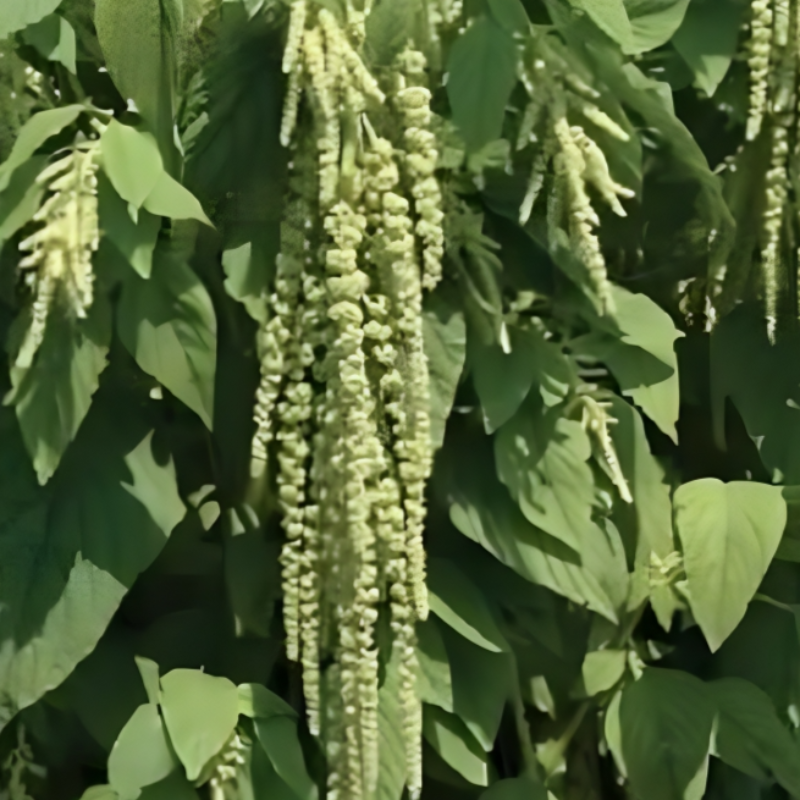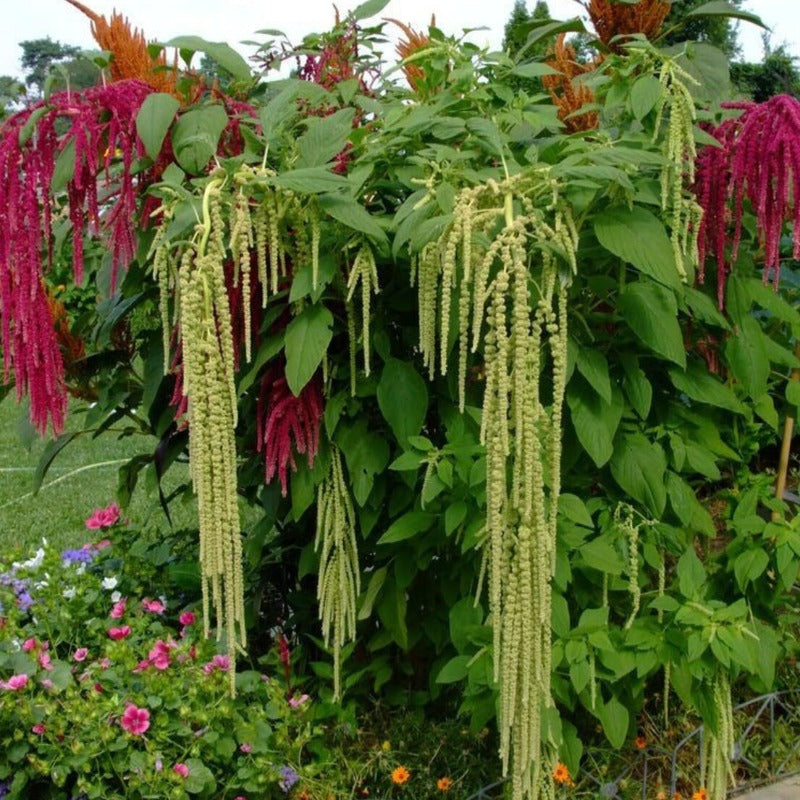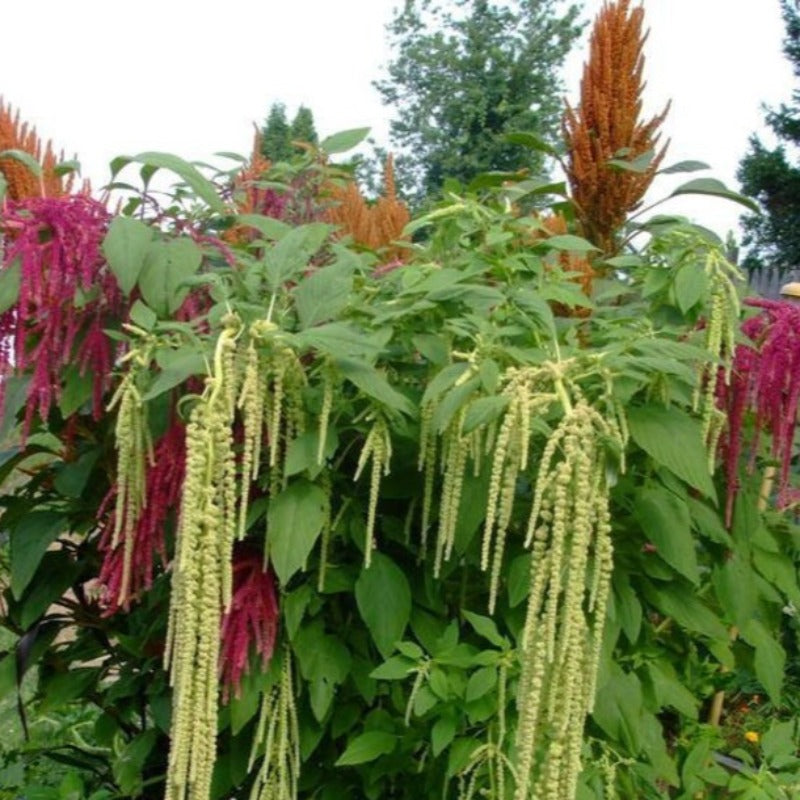- Historical context: Amaranthus, commonly known as amaranth, is a genus of annual or short-lived perennial plants. The 'tails' variety, often referred to as 'Love-Lies-Bleeding,' has been cultivated for centuries for both ornamental and practical purposes.
- Geographical origination: Amaranthus species are native to the Americas, particularly Central and South America.
- Relevant cultural significance: Amaranth has been a staple food and ornamental plant in various cultures. The 'tails' variety is particularly noted for its striking, cascading flower spikes.
- Time period of discovery: Amaranth has been cultivated since ancient times, with evidence of its use dating back to the Aztec civilization.
- Original habitat: Amaranthus species thrive in warm, sunny environments with well-drained soil.
- Notable historical uses: Historically, amaranth has been used as a food source, ornamental plant, and in traditional medicine.
- Ideal temperature range: Amaranthus thrives in warm temperatures, ideally between 70-85°F (21-29°C).
- Soil type: Well-drained, fertile soil with a pH range of 6.0-7.5 is ideal.
- Sunlight requirements: Full sun is essential for optimal growth.
- Watering needs: Regular watering is necessary, but the soil should not be waterlogged. Allow the top inch of soil to dry out between waterings.
- Planting season: Plant seeds in late spring after the last frost, or start indoors 6-8 weeks before the last frost date.
- Germination time: Seeds typically germinate within 7-14 days.
- Growth cycle duration: Amaranthus plants usually reach maturity in 60-90 days.
- Common pests and diseases: Common pests include aphids, spider mites, and leaf miners. Diseases such as root rot and fungal infections can occur if the soil is too wet.
- Companion planting advice: Amaranthus can be planted alongside vegetables like tomatoes and peppers, which benefit from its ability to attract beneficial insects.
- Common challenges and solutions: Overwatering can lead to root rot. Ensure proper drainage and avoid waterlogged soil. Pests can be managed with insecticidal soap or neem oil.
- Nutritional values: Amaranth seeds are rich in protein, fiber, and essential amino acids, making them a nutritious addition to the diet.
- Health benefits: The seeds are known for their high levels of antioxidants, vitamins, and minerals, which can support overall health and wellness.
- Culinary uses: Amaranth seeds can be used in a variety of dishes, including porridges, soups, and baked goods. The leaves are also edible and can be used in salads and stir-fries.
- Medicinal uses: Traditionally, amaranth has been used to treat ailments such as inflammation, digestive issues, and anemia.
- Other unique advantages: Amaranthus plants are not only beautiful but also drought-tolerant and easy to grow, making them a versatile addition to gardens.








